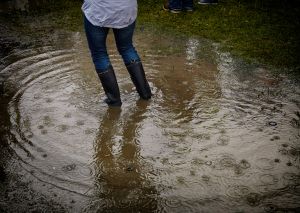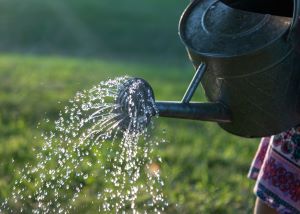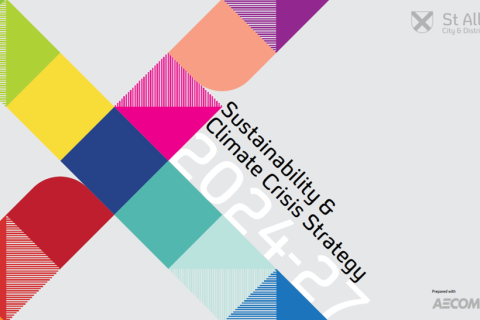Water Resources & Flooding - Our Actions
The South East of England is classified as a water stressed area. This is because we get less rainfall than other parts of the country but have relatively high population and water abstraction. The Colne Catchment (which includes St Albans) uses on average 10 litres per day more than the UK average with each person using around 142 litres every day. With growing population, combined with changes in our climate, we are likely to see water resources reduced. Over coming years, households will likely face more significant restrictions in water usage if we can;t find ways to be more efficient with our water consumption.
We are doing what we can to reduce water consumption in our buildings and new developments and are also focusing our efforts on ensuring that District infrastructure is resilient to changes in the water cycle that accompany climate change. This page outlines our commitments around water resources as listed in our Sustainability and Climate Crisis Strategy 2024-27. Progress will be updated periodically.
 We will look for ways to save water and reduce water use from all our assets.
We will look for ways to save water and reduce water use from all our assets.
- WF1 Achieve high levels of water efficiency in Council assets.
What we will do:
- Re-procure the Council's water supply to enable better consumption monitoring.
- Make physical infrastructure changes within Council buildings to reduce water usage, e.g. low flow and sensor/push taps and review the feasibility of installing rainwater and greywater harvesting to new and existing assets.
Achievements so far:
- Water efficient toilets and taps are incorporated as standard to new builds, refurbishments and repairs.
- Our target is to have its Operational Buildings on a single water supply contract by March 2025.
- Rainwater harvesting is being installed to the District Offices to serve the adjacent park.
 We will look for ways to help reduce the risk of flooding on our land and buildings by investigating ways to reduce surface water runoff.
We will look for ways to help reduce the risk of flooding on our land and buildings by investigating ways to reduce surface water runoff.
- WF2 Reduce the flood risk of Council assets.
What we will do:
- Implement appropriate measures to address the risk H3a of the 2022 UK Climate Change Risk Assessment (CCRA) 'Risks to people, communities and buildings from river and surface flooding' in the Flood Response Operational Plan.
- Implement appropriate measures to address the Climate Change Risk Assessment (CCRA) through the Winter Treatment Operation Plan.
- Ensure parks and recreational facilities are resilient to projected extreme weather, including increased rainfall and dehydrated / saturated ground conditions.
Achievements so far:
- All new development briefs will include the requirement for sustainable drainage to be included in the design and construction.
- Tree planting programme helps to increase rain interception.
- River Ver project highlights areas susceptible to flooding events and works to reconnect and formalise these areas.
 Work with communities, businesses, and water companies to find ways to improve water efficiency and encourage the use of water harvesting measures.
Work with communities, businesses, and water companies to find ways to improve water efficiency and encourage the use of water harvesting measures.
- WF3 Work with partners and the community to deliver projects that manage water resources more efficiently.
What we will do:
- Develop Planning Policy within the Local Plan to set water consumption targets for new developments.
Achievements so far:
- Flower beds are planted with perennial seed mix to reduce need for replanting each year and excess watering.
- Local Plan Hearings commence April/May 2025.
 Support projects to reduce flooding across the District, particularly where they provide other benefits for the environment such as tree planting.
Support projects to reduce flooding across the District, particularly where they provide other benefits for the environment such as tree planting.
- WF4 Work with partners and the community to reduce the risk of all types of flooding.
What we will do:
- Assist the Hertfordshire County Council Flood Management Team and the Environmental Agency to deliver natural flood management projects.
- Work with our community to provide advice and aid during instances of flooding through the emergency planning function and in partnership with other organisations.
- Develop Planning Policy within the Local Plan that requires all new developments to reduce the risk of flooding and incorporate Sustainable Drainage Systems (SuDS).
Achievements so far:
- Aquascs are available to Parish Councils to give to vulnerable residents and stocks have been checked.
- Supporting HCCC to carry out their cyclical gully cleaning programme.
- Developing materials with the Environment Agency to raise awareness of flooding risks and mitigating measures.
- Emergency Plan is in place.



